Tweet your haiku responses to #HaikuNA and they will appear on our live twitter feed at the conference.
|
HNA haiku prompt #2 is salt wind.
Tweet your haiku responses to #HaikuNA and they will appear on our live twitter feed at the conference.
0 Comments
There will be a haiku prompt for each day of HNA. It will be available at the information table and will be posted on the blog and tweeted.
If you would like to share the haiku you are writing on the Queen Mary or participate with HNA long distance through the prompts, please compose your haiku to the prompt and tweet it using the hashtag #HaikuNA. If you do not tweet, you could post it in the comments here, or e-mail Sean Carlton at hna2013outreach@gmail.com, and we will tweet them for you. As poets arrive from all over the world, on this day before Haiku North America 2013 opens, we have selected the prompt of "migrations." 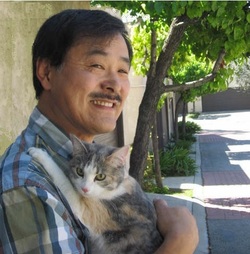 Sunny Seki, the teacher/director of Los Angeles-based Rasshin Senryu group, and his wife, Judith, will be giving a presentation called "Senryu: Refreshing the Human Spirit," on Friday afternoon at Haiku North America. Seki, the author of Gardeners’ Pioneer Story, will introduce the genre of senryu. He will show how this 5-7-5 poem evolved from haiku, and how it came to be the poetic expression of the common people. He will introduce his book about the long, painful, and yet satisfying history of the immigrant Japanese gardeners. Finally, he will conclude by sharing several of the emotional, timeless senryu poems written by the gardeners themselves. Senryu poetry evolved from haiku approximately 250 years ago. While haiku has been perceived as an art form for the elite, senryu has served to become the poetic expression of the common, working person. Rather than centering on the seasons, senryu focuses on the human predicament, and in the process forces the reader to smile, laugh, or perhaps shed a tear. Sunny plans to illustrate the origin and early history of senryu. 1) The origin and early history of senryu 2) His research into the history of the Japanese in North America, and how they revealed their lives through poetry … History told via events and dates seems inanimate, but when told through the poetic words of the people who lived it, history comes to life and makes us feel that we are all the same – regardless of when we lived. 3) A summary of the history of Japanese gardeners … how they struggled with poor equipment, prejudice, and war, and how they rose to be highly respected workers who pushed their lawnmowers so that their children could go to college 4) Some of the warmest senryu poems written by gardeners Sunny’s senryu name is “Sankyaku Seki.” “Sankyaku” means “tripod,” a sturdy symbol of the photography studio he and his wife operated for 30 years. Sunny has produced three art forms: photography, children’s books, and senryu, and so it is fitting that this triple is summarized in his name. Use of this type of pun is the typical way that senryu artists choose their names. Sunny Seki is the teacher/director of Los Angeles-based Rasshin Senryu, and he has compiled two books that recount the history of Japanese in North America via the senryu that they wrote. Sunny is also the author/illustrator of three children’s picture stories that introduce Japanese folklore to children of all ages. His wife Judy is a high school math teacher, and they live in the Los Angeles area, where they have raised their nine children. 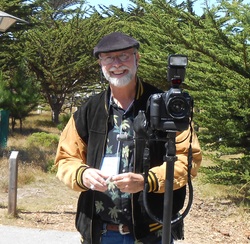 A Rengay Workshop with Garry Gay Thursday, 10:10-11:00 a.m. Due to some last minute travel complications, Vuong Pham was unfortunately unable to make it here from Australia. We are disappointed to miss him at HNA 2013. However, we are happy to announce that Garry Gay will conduct a rengay workshop during that time slot. Partnering up with another poet to write a rengay is a great way to connect. Whether or not you make Garry's workshop, co-authoring a rengay is a fun conference activity. So, bring your pens, notebooks, and be prepared to partner up and write some rengay! Conference tip from Old Pond Comics: Find your way around the Queen Mary. The conference will take place at the Royal Salon, Victoria Room/Deck and Regent Room. The Queen Mary has 7 restaurants and lounges, a spa, a business center, shops, an arcade, and lots of seating areas.
The poets are coming and the excitement is building! Only 3 more days until Haiku North America 2013!!
Naia has created a new HNA attendees page on our website which has a link to a cool interactive map that shows where everyone is coming from! The map, which was created by Sean Carlton and Yvette Kolodji, can also be accessed directly here.  On Friday morning at Haiku North America, HNA Director and Co-Founder Michael Dylan Welch will present a paper entitled, "Becoming the Leaf: A Haiku by E.E. Cummings. E. E. Cummings read R. H. Blyth in the 1950s, and his latter poems are directly influenced by haiku. This paper digs deeply into Cummings’ seminal poem, “l(a,” which Mitchell Morse once described as “in spirit a perfect haiku.” Come discover the reasons why, and learn about its direct Japanese influences, including Cummings earlier forays into “hokku.” Detailed academic exploration of haiku strategies and influences on one of E. E. Cummings’ most famous poems, in the context of other haiku-related poems by the author. Handouts will be provided to attendees.  New Jersey Columnist, Gene Myers, will be presenting "What Haiku Poets Can Learn from Rockstar Daryl Hall" on Thursday, August 15th, at Haiku North America 2013. Rockstar Daryl Hall used the Web to change his reputation and fix his legacy. When asked about the resurgence in his popularity Hall said he found his tribe. What does this have to do with haiku? The best thing an artist can do in this day and age is to find their tribe. Thanks to the Internet, no matter who you are, you can find like-minded people and they can find you. The presentation will focus on how haiku lovers can do just that. In an interview, rockstar Daryl Hall talked about the revolution that is responsible for his new-found popularity. It was "new-found" because he and his musical partner, John Oates, found themselves with a PR problem in the 90s. As a reaction to their 80s hits, self-conscious music critics refused to write about Hall and Oates. The critics told the band's manager they would "never write about those guys!" What the critics failed to recognize was that, "The Times They [Were] A-Changing." The critics no longer understood where the conversation was or how it takes place. Hall knew the conversation had moved to the web and so he started a webcast from his home. He made a website from which he single-handedly changed his reputation and fixed his legacy. When asked about the resurgence in his popularity Hall said he found his tribe. The best thing an artist can do in this day and age is to find their tribe. Tools like the Haiku Society of America website, The Haiku Foundation (with all of its social media and video archive), Haiku North America, conferences and a number of other resources, including blogs, publishers' websites, Twitter feeds, etc. make this possible for poets. Myers plan to talk about these resources and how best to harness them. GENE MYERS' weekly column, The Joy of Life, runs in 27 New Jersey newspapers. He is an entertainment journalist who was awarded first place in Arts and Entertainment Writing and Column Writing by the New Jersey Press Association. He is also a columnist for the Haiku Society of America and blogger for The Haiku Foundation. His articles have appeared in more than 40 newspapers. His poetry publishing credits include: Frogpond Journal, The Rutherford Red Wheelbarrow Anthology, Beyond the Rift: Poets of the Palisades, Disco Prairie Social Aid & Pleasure Club by Factory Hollow Press, Paper Wasp, Chrysanthemum, A Handful of Stones, Prune Juice Journal of Senryu & Kyoka and the Irish Haiku Society’s Shamrock Haiku Journal. His work can be found at genemyers.com. 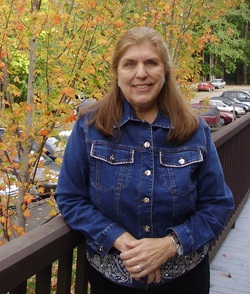 If you write free verse and/or prose poems and have some that haven't gelled for you yet---or that you'd just enjoy experimenting with---consider changing them into haibun. Penny Harter will share her process for doing so, with specific examples from those two genres and the haibun they became. You can come just to listen, or bring a poem or prose-poem with you that you'd like to work on and maybe share the results. Harter's workshop is scheduled for Thursday morning. Based on her essay / lesson "Circling the Pine: Haibun and the Spiral Web" which appears in Wingbeats: Exercises & Practice in Poetry (Dos Gatos Press, 2011), Harter plans to hand out copies of the specific poems and/or prose-poems along with the resultant haibun she revised them into (various examples used in the essay). After presenting each paired example, she will discuss her process and invite comments from participants about the perceived differences between the two pieces, along with discussing my own observations about the differences shifting these into haibun have made.Then she'll encourage them to try doing the same with one of their own poems---if they have brought one to experiment with---and possibly share the result with the group. Penny Harter’s recent books include her prizewinning collection of haibun, One Bowl (2012); Recycling Starlight (2010); and The Night Marsh (2008). With her late husband William J. Higginson, she co-authored The Haiku Handbook (25th Anniversary Edition, 2010). A Dodge poet, Harter read at the 2010 Dodge Poetry Festival. She is winner of three poetry fellowships from the NJSCA, the Mary Carolyn Davies Award from the PSA, and a January, 2011, fellowship from VCCA. Harter's new collection of haibun and free verse, The Great Blue, has been accepted by Mountains & Rivers Press. Conference tip from Old Pond Comics. Put yourself in the picture! Meet at the Victoria Room Deck on Friday August 15 at 12:15 to be part of the group picture that will be taken by Garry Gay. Your conference registration fee includes a free print of the group picture that will be distributed at the Banquet on Saturday night.
|
Archives
May 2023
|

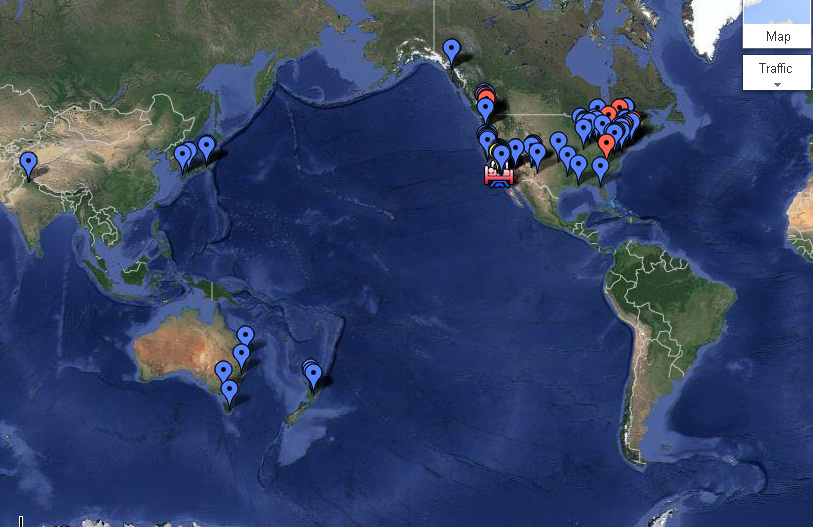
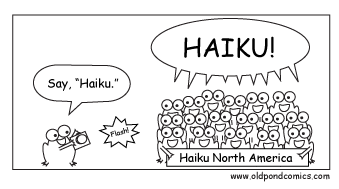
 RSS Feed
RSS Feed
